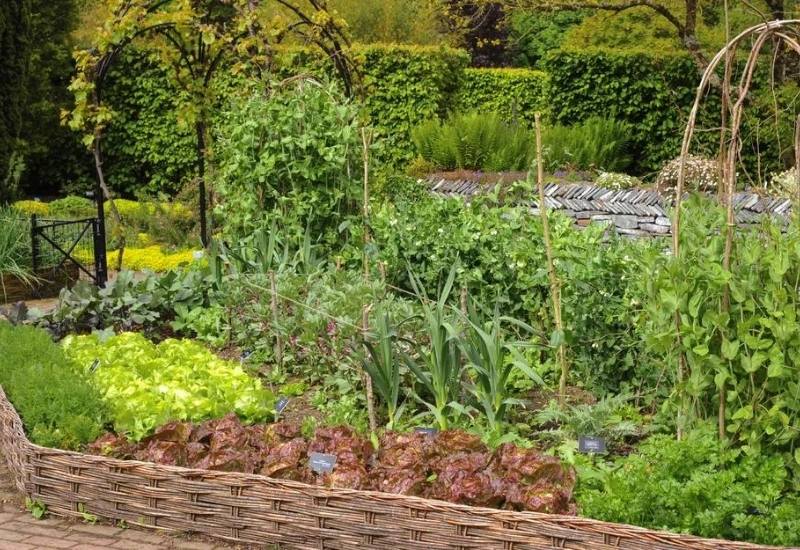
In our area, August is usually the month with the best weather which is why many people take their holidays this month.
It’s not too hot and not too cold, with not too much rain but not dry either. Sounds pretty perfect for planting in the garden, doesn’t it?
In many places around the world, August is a great time to sow new seeds in the garden and regenerate the beds with new transplants.
You might think the end of summer is too late to plant anything new, but there are a number of cool-weather crops and flowers that can be planted in August which can either be harvested before the frost comes, or left in the garden under the snow for fresh veggies in the winter.
As the summer crops being to wilt and fade, here are some vegetables and flowers to try planting in August. First, let’s look at some things to consider when starting seeds and transplants in August.
Successful August Planting / How To Plant Successfully In August
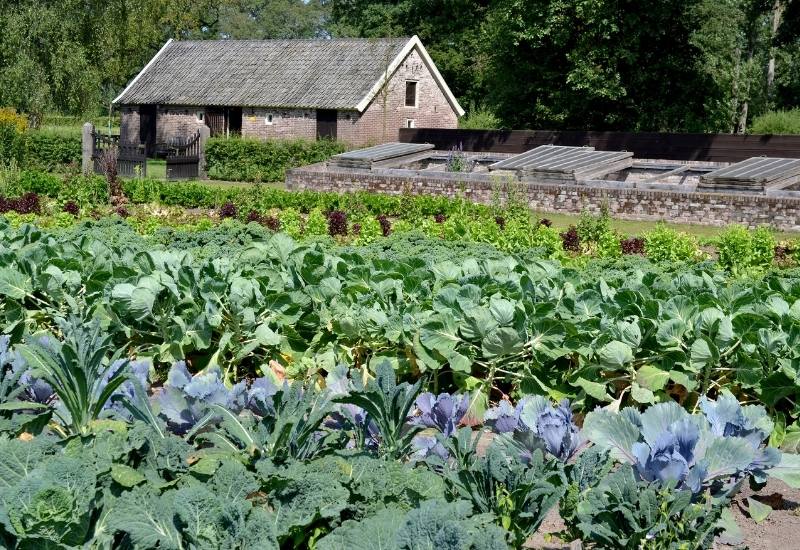
Planting in August presents its own set of challenges that you don’t normally face with a spring planting. However, any obstacles you might encounter can be easily overcome by applying these lessons:
Choose Between Direct Sowing And Transplants
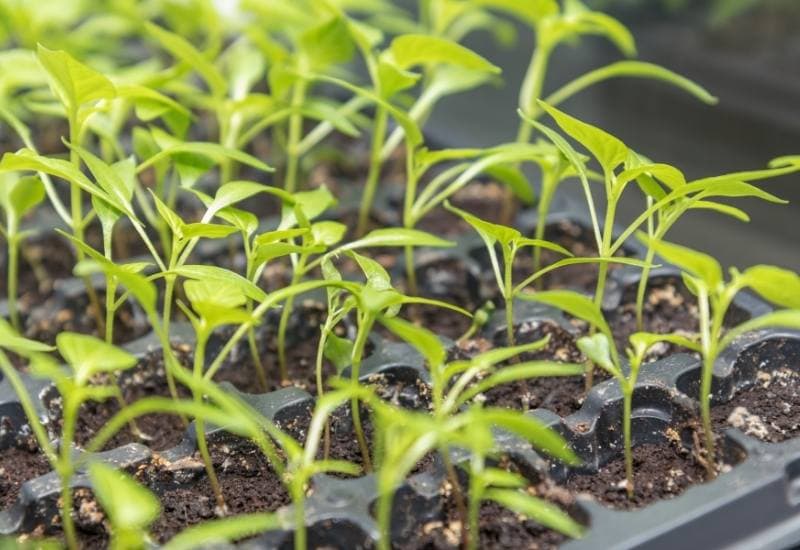
Direct sown seeds have the advantage that they are already where they need to go and don’t suffer from transplant shock and we can let nature handle them as needed.
However, with fall being so imminent, August is a great time to set out transplants that were started weeks ago and are now ready to spread their roots.
Transplanting in August gives your plants the jump start they need to produce before the growing season ends.
Some of the plants suggested below will work better as transplants but many can be successfully started from seeds.
Maximize Space With Succession Planting
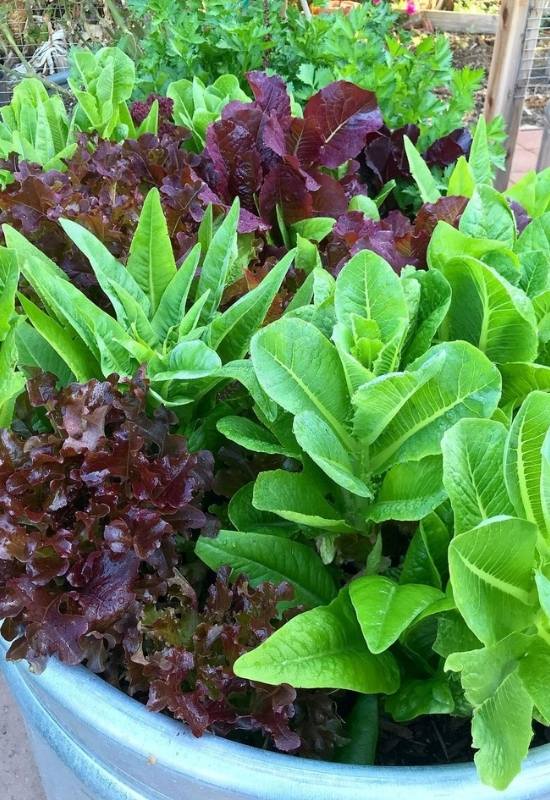
Instead of planting in a new garden plot, consider succession planting. Succession planting is simply growing one crop once another has finished producing.
After you have harvested greens, carrots, or other early vegetables, plant your new crop in the same spot.
This will not only increase your yield in a given area, but will also help prevent erosion of the bare soil left from the first crop.
Alternatively, you can inter sow new seeds of smaller vegetables, such as spinach, in between larger plants like pole beans.
When planning a succession planting system, make sure you rotate your crops and don’t plant vegetables following another veggie from the same family or you will encourage disease and insect infestations.
For example, if you harvested carrots, don’t follow this with turnips or root-hungry diseases and bugs will stick around for the second course. Try planting greens or another unrelated vegetable.
Succession planting isn’t just for vegetables. As August rolls around, many blooms in your flower bed will have started to fade. Transplanting out new plants will brighten up your garden into the fall.
The Devil’s In The Details
Plan ahead and make sure you have enough viable seeds before August rolls around. It is extremely frustrating to get all gung-ho to plant and then realizing you don’t have enough seeds left.
The varieties you planted in the spring might not be the best seeds to plant in the late summer since late summer vegetables and flowers need to handle the hot day temperatures but be cold hardy for the cooler nights and potential frost, so make sure you are well stocked with August-friendly varieties.
If you do have to order new seeds, make sure you order early, because if you have a favorite variety, chances are it’s a lot of other people’s favorite variety, too. Many seed companies sell out of seeds in the spring, so make sure your plan ahead and order early.
Add Compost
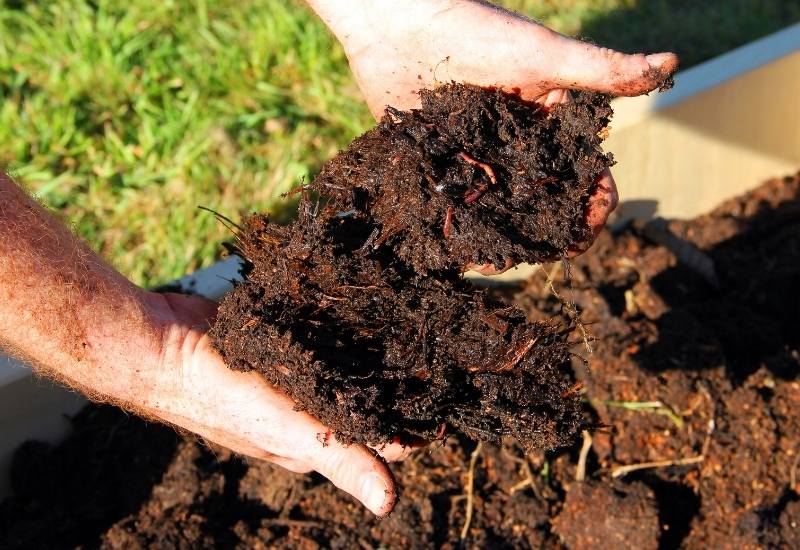
Prior to your August planting, incorporate a good amount of compost into your garden bed. This will not only increase fertility for the new seeds or transplants but will also enhance your soil texture and improve water retention and aeration, both of which are important in hot and dry weather that.
Transplant When It Is Cool
New transplants set out in the head of the day can be hit hard by the blazing sun. To alleviate this problem, set out transplants late in the afternoon or the evening.
Alternatively, transplant into your garden on a cloudy day or even when it is lightly raining.
Rest In The Shade
If the sun is particularly blazing and aggressive, providing shade for delicate plants can help them make it through the heat spell.
You can use floating row covers, shade cloth, or a mini hoop tunnel to shield the blazing sun. For small garden beds, putting up an umbrella works well.
Gardening is hard work, so don’t forget to take your own break and rest in the shade.
Water Consistently
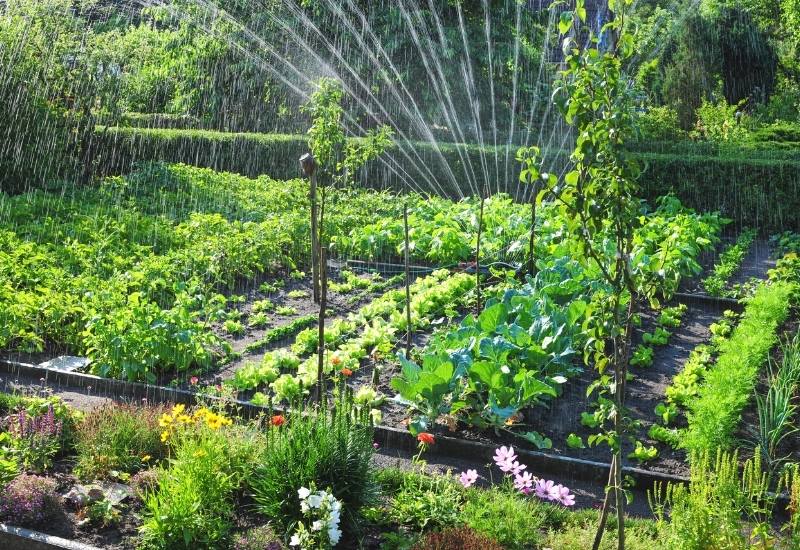
Watering in August is very important for transplants, germinating seeds, and seedlings alike. Seed germination will be poor if the soil becomes dry,
not only from the heat but also because there is no moisture stored in the ground from the winter as is the case in the spring. Seedlings and transplants also require adequate moisture to establish their roots.
Consider a drip irrigation system such as a simple drip garden hose, rather than overhead watering.
Watering your garden with a sprinkler or spray nozzle can burn the leaves of your plants and more of it will be lost due to evaporation in the summer heat.
Mulch
Organic mulch, such as straw, newspaper, cardboard, or shredded leaves placed around your plants in August will retain lots of moisture that would otherwise be lost to evaporation.
Mulching can also insulate the soil and can keep it from getting too hot which is a plus for certain cool loving plants.
Weed Well
Weeding is important all year long to keep weeds from choking out your plants, but this chore carries significant import in August because this is when weeds usually flower and go to seed so any weeds you eliminate now means fewer weeds to deal with in the spring.
Divide Perennials
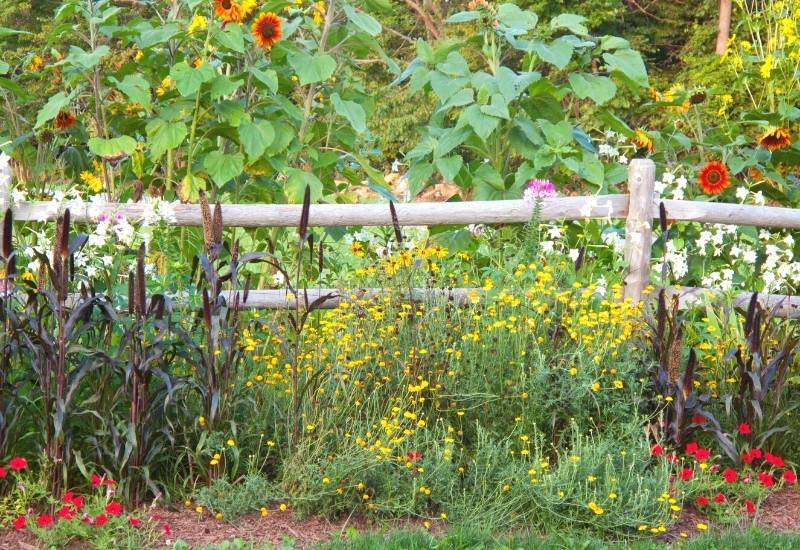
If you want to enlarge your flower garden there are many perennial flowers that can be successfully divided very easily, and August is the best month to do this.
Some flowers to divide in August are hostas, lilies, daylilies, and bearded irises. Rhubarb plants can also be divided in the same way
To divide your perennials, dig up the entire plant without damaging the root, and then cut the root ball into small pieces with your shovel or a sharp knife for greater accuracy. Replant all of the pieces as desired.
10 Hardy Vegetables To Plant In August For Fall And Winter Harvest
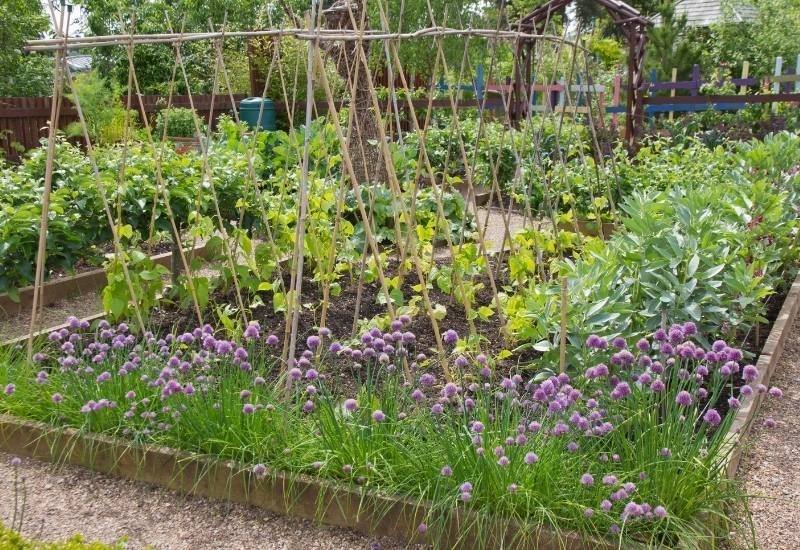
It is exciting to see new seedlings emerge as the summer starts to wind down. It is a pleasant reminder that cold weather hasn’t taken hold yet, and it is a treat to enjoy fresh vegetables as the season is coming to a close.
Here are some of the best vegetables to plant in August. All of these vegetables will not grow in every area but this will hopefully give you some ideas of what you can plant to extend your harvest as long as possible.
1: Spinach

Spinach seeds germinate best when the soil temperature is between 5°C and 20°C (45-70°F), making it a very cool-season plant.
Direct sow spinach seeds in August and the seeds will start to sprout as the temperatures start to cool off.
Even if August stays hot, the seeds will patiently wait in the ground until the soil cools off enough, and this frost tolerant green will keep growing after fall arrives.
If an early snowstorm is a concern, baby spinach can often be harvested in under 40 days from germination.
2: Scallions
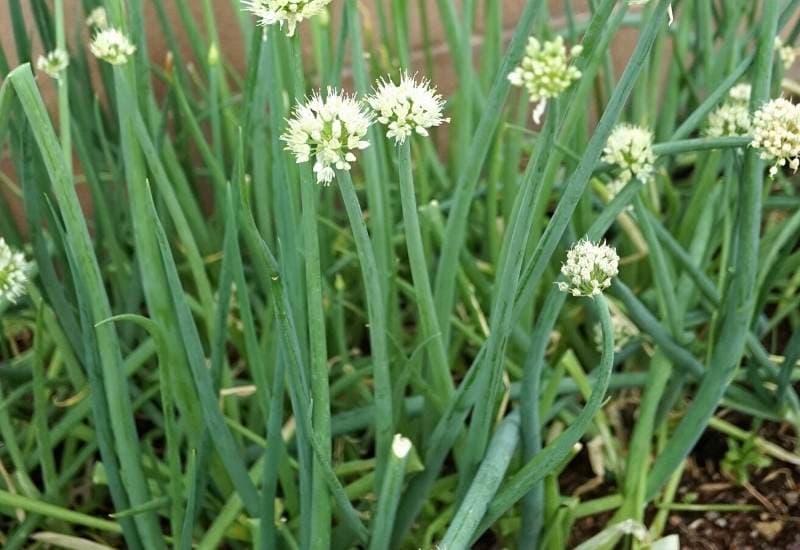
Green onions need temperatures between 21°C to 25°C (70-75°F) to germinate, so they are another perfect vegetable to direct sow in August.
They are also quite frost tolerant if they have reached a sufficient size, and many gardeners say they can survive down to -10°C (-33°F) with good success.
Sow the seeds shallowly and keep the watered and you should get a good germination rate.
Many varieties can be overwintered depending on where you live and August is a great time to plant these so they are ready for the spring.
3: Mustard Greens
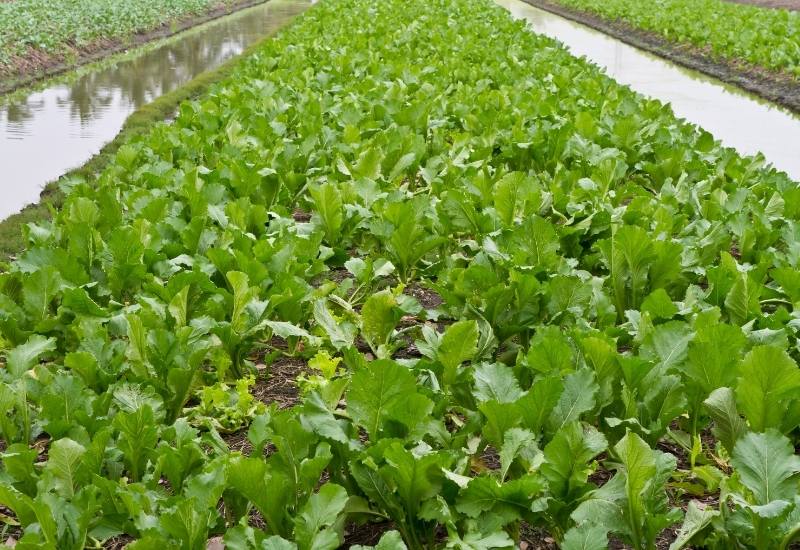
Mustard greens are very versatile leafy greens that are good to direct sow in August. In fact, they can be planted every two weeks throughout the month and into September so you will have fresh greens into the fall and early winter.
Many of them can be harvested in 20 days as baby greens or they will be full-sized in 40 to 50 days.
There are many different varieties available, so shop around to find one that matches your growing plant and your taste buds.
4: Turnips
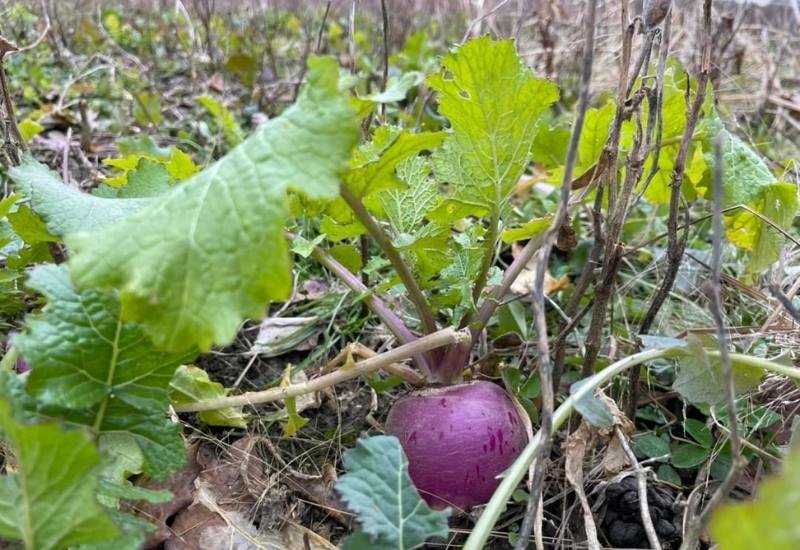
Turnips are another fast growing, cool season veggie that does well direct sown in August. Some varieties, such as the Hakurei, are ready in 35 days, and don’t forget that the leaves are edible, too!
Sow the seeds 5mm to 1cm (¼-½ inch). Once the seedlings emerge, thin them to about 15cm to 20cm (6-8 inches) depending on the size you plan on harvesting them. Keep them well watered as they are growing for the best growth and flavour.
Turnips are quite frost hardy, so consider growing some of the slower maturing varieties as well.
5: Lettuce

Summer is the time for salads making lettuce a staple all season long. While lettuce has poor germination and bolts easily in the heat of summer, the cooler August weather is ideal for germinating and growing lettuce.
Sow the lettuce seeds quite shallowly and keep them evenly watered. Baby greens can be down close together, but thin the plants to about 20cm to 30cm (8-12 inches) depending on how big you want your heads to grow.
If you want to really extend your harvest, try cold resistant varieties such as Winter Density or Rouge d’Hiver, both of which grow well and have good flavour.
6: Kale

Kale is well known for growing under a blanket of snow but they are also succulent when harvested as baby leaves making it ideal for an August planting.
They are fairly drought tolerant if the weather turns hot and dry, but the quality and flavour can suffer so water as required.
So the seeds about 5mm (¼ inch) deep, and thin as needed. Pick leaves as needed and leave the plant in the garden and it will continue to grow more.
Some good varieties to try are the very popular Lacinato because of its impressive cold resistance, and Red Russian which is also cold hardy and excellent as baby greens.
7: Radishes
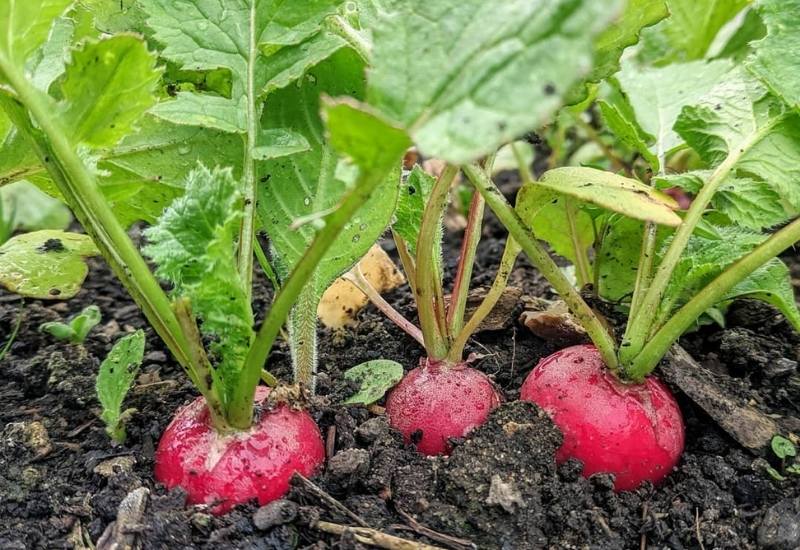
We love growing radishes in our garden. They are fast and easy to grow, good eating, the flowers are great for pollinators and the edible pods are easily dried to save seeds.
Radishes are usually a spring crop since they bolt easily in the heat, but they also germinate and grow very well when direct sown in August.
Radishes can grow quite close together with about 2.5cm to 5cm (1-2 inches) between them so don’t worry too much about thinning them.
Keep them well watered and the moisture will give them a good flavour and texture (but be careful not to over water).
Most varieties are ready in 25 to 30 days for a fast harvest so you can probably plant them again at the end of the month or into September.
8: Cucumbers
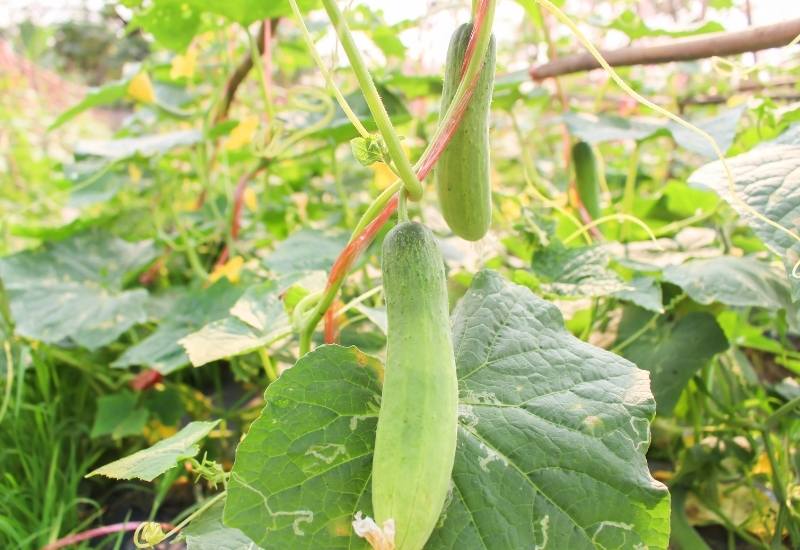
In many areas, August is a great time to transplant cucumbers since many varieties only take 40 to 50 days to bear after they are put into the garden.
Cucumbers need warmth to grow so maybe pass on this garden delicacy if your late summer temperatures start to cool off too early.
Start your cucumbers indoors in July and they should be in good form to transplant in August. Sow one seed in each pot about 2.5cm (1 inch) deep, and transplant them so they have sufficient space to grow.
9: Garlic

Now is the time to get in your garlic sets for next year. Separate your garlic into cloves. Make sure not to skin them though you can remove loose, dry husks.
Plant each garlic clove 2cm to 5cm (1-2 inches) deep or deeper if you live in a climate with lots of frosts and snow.
Space each clove about 10cm to 15cm (4-6 inches) apart. Our fresh garlic will be ready to harvest the following July.
10: Broccoli, Cauliflower, and Cabbage
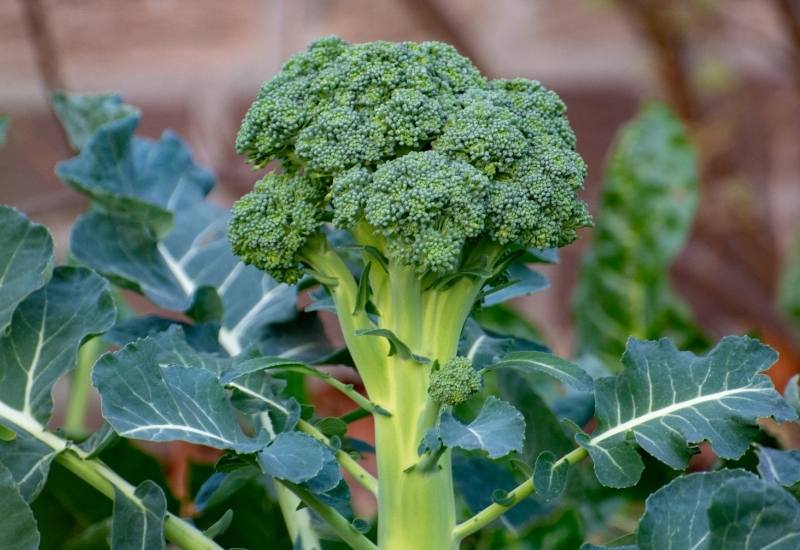
If you live in a climate with mild winters, August is the best month to transplant your broccoli, cauliflower, and cabbages in your garden. Start these plants indoors in late June or early July to transplant in August.
All of these will continue to regrow once you have harvested them if your season is long enough, and some varieties can overwinter very will in mild climates.
7 Flowers To Plant In August
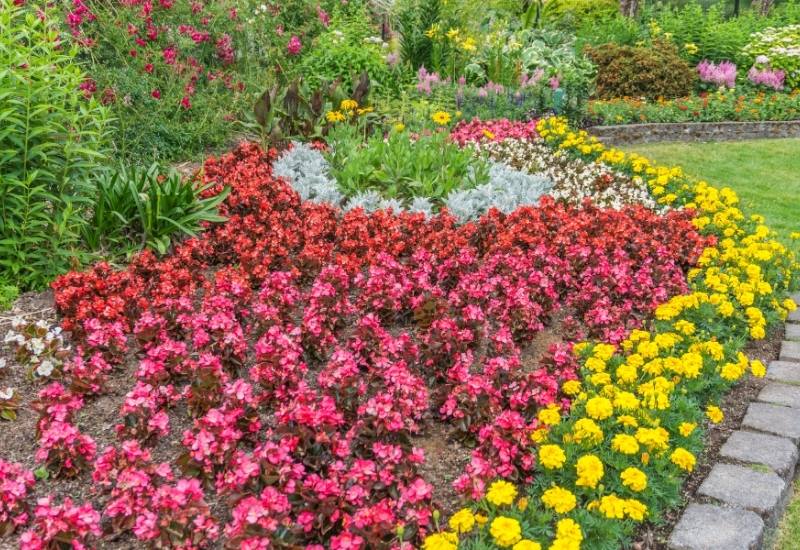
It is also nice to put out new transplants to rejuvenate some beds that may have started to dwindle or stop producing altogether.
Here are 6 hardy annuals or biennials flowers you can plant in August to get late summer color in the garden.
1: Sweet Allysum
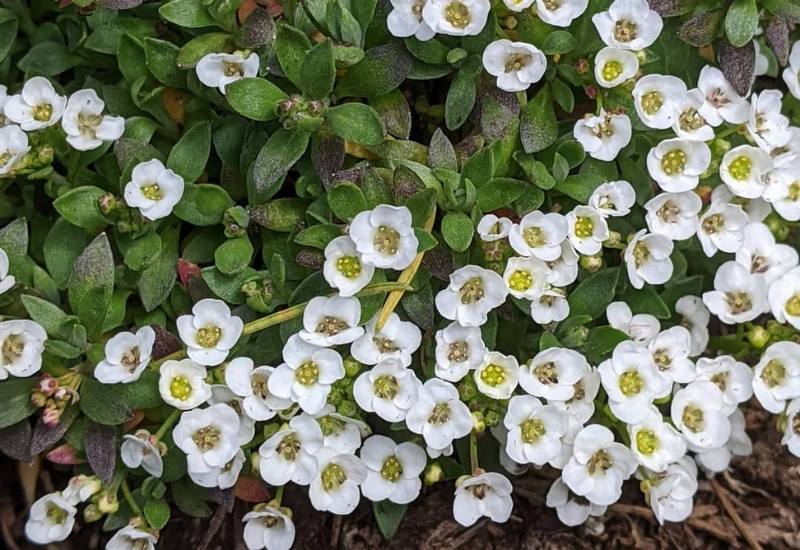
Sweet alyssum not only have a place amongst your flowers, but they also make an excellent cover crop for your vegetable garden.
They are a spreading flower with small clusters of white flowers. If you plant sweet alyssum early in the year, it will bloom in the spring, decline over summer, and then come back for a second bloom in August and into the fall.
You can also direct sow sweet alyssum seeds in August and they will have their first bloom in the fall if your season is long enough. Sow the seeds lightly on the surface of the soil and they should germinate in one to two weeks.
This dense plant will choke out weeks and can be tilled under as a green manure after it has finished blooming.
2: Chrysanthemum
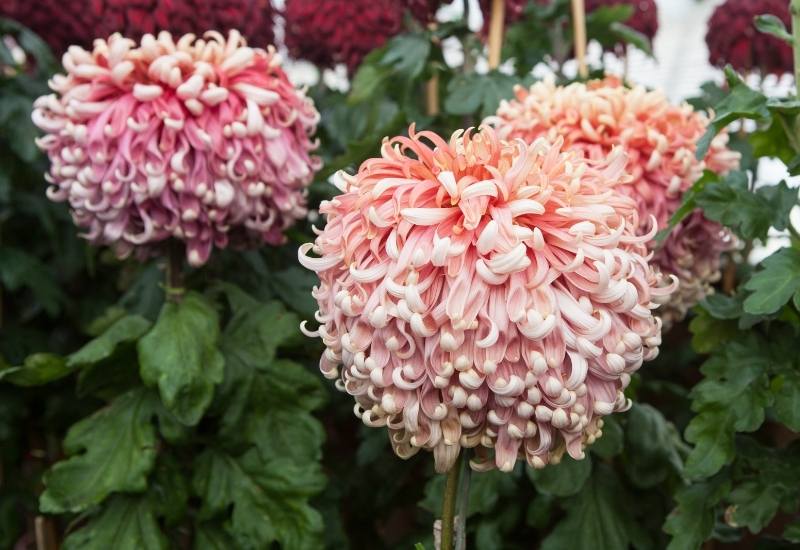
Chrysanthemums are a great flower to transplant into your garden in August and they will bloom in September. Depending on the length of your season, they will bloom until they are killed by frost.
When selecting a chrysanthemum from the garden centre, choose one that is younger that has not bloomed to reduce transplant shock,
and set out your transplants 25cm to 45cm (8 to 18 inches) apart. They come in many different shapes and colours to add lots of variety to your flower garden.
Sow the seeds directly on top of the soil in a spot that receives direct sunlight. Keep them evenly watered and they should germinate in about 2 weeks. Mums are usually grown as annuals but they are hardy to Zone 3.
3: Nasturtiums
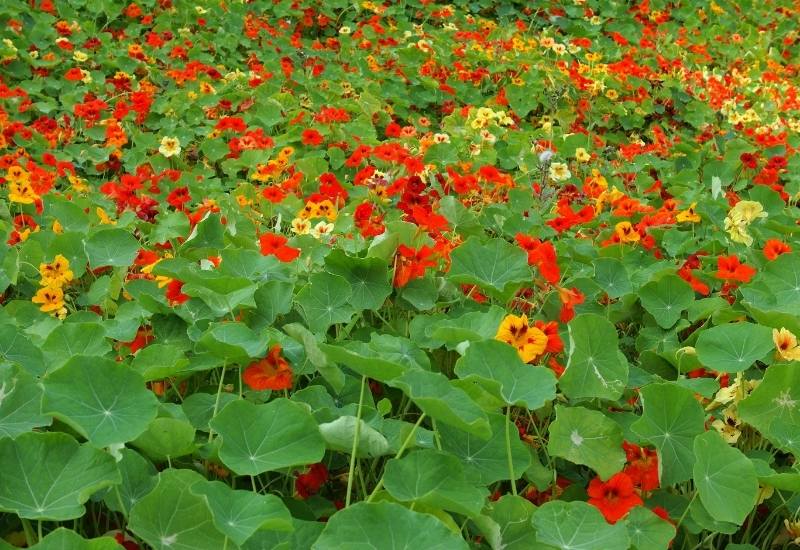
Nasturtiums are hardy to Zone 2 so they are suited for many gardens. There are many varieties available and can be trailing, vining, or bush varieties.
Depending on where you live, they can bloom from spring until September. Nasturtiums do not like the heat, so avoid direct sunlight or provide protection for the roots with rocks.
Sow the seeds 1cm (¼-½ inch) deep. The ideal germination soil temperature is 12°C to 18°C (55-65°F) so avoid planting during a hot spell.
Nasutrtium seeds might take more than 2 weeks when sown in the garden so be patient and keep the soil slightly moist and weed-free.
4: Cornflowers
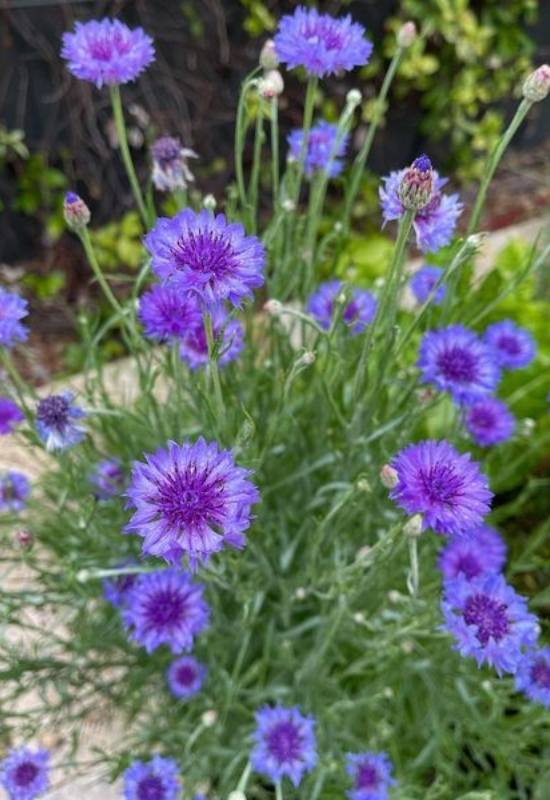
Cornflowers are one of our favorite flowers to grow, and they do very well in our Zone 2b climate. If you sow the seeds in August, they will have a good start in the spring and will have beautiful blooms next year. They come in many different varieties, but all benefit from deadheading to extend the blooms.
Cornflowers can be part of a mini-ecosystem in your backyard. Some varieties of cornflowers are great attractants of ants which in turn draw a large number of woodpeckers and other insect-eating birds.
Cornflowers are excellent self-seeders or you can collect the seeds to encourage growth where desired.
5: Larkspur
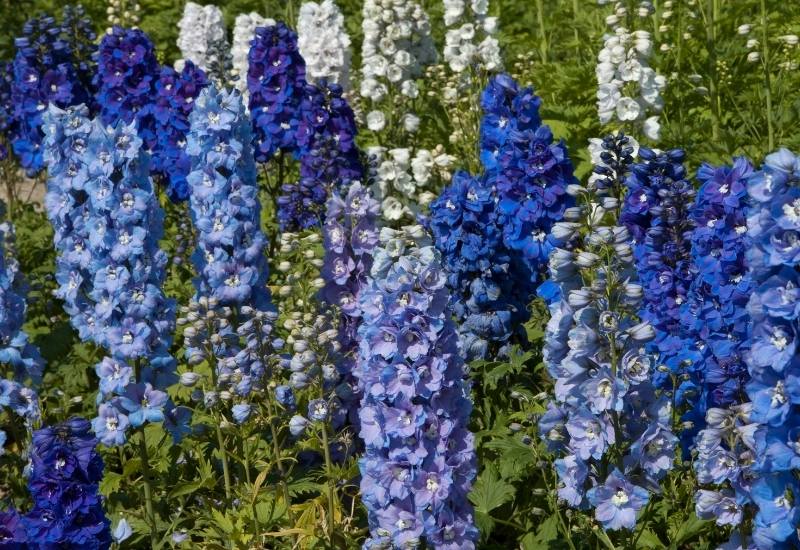
Larkspurs are another flower that will self-seed in August, and the many different coloured varieties will add beauty to your garden. They are tall, upright stems that create a nice border or backdrop to your flower bed.
Lakspurs are a delphinium that are easy to grow in almost every garden type. It can be beneficial to vernalize the seeds by placing them in the fridge for 2 weeks prior to sowing in the garden.
Just barley cover the seeds with soil and cultivate carefully as the seeds can take nearly a month to germinate. The seeds like it cool so don’t plant durning a heatwave.
They get their name from a small spur-like petal on the back of each flower.
6: Foxgloves
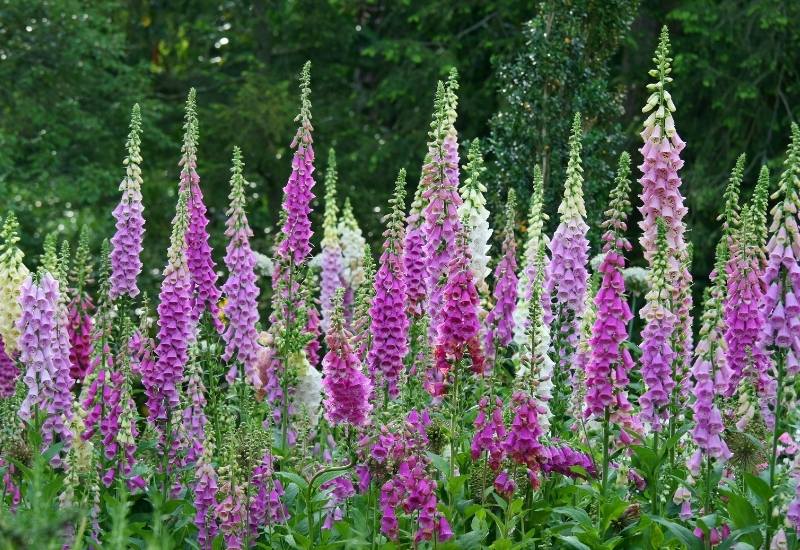
Foxgloves are a biennial that can be sown in August so they have time to establish themselves before winter. This will give them a jump start in the spring allowing them to flower in the summer to self seed before dying off.
This deer resistant plant is perfect for direct sowing in the late summer so they can get established before winter comes, and they are hardy in zones 4 to 10.
Sow foxglove seeds on the soil surface and be paitient as they can take 2 to 3 weeks to germinate. Water them regularly throughout their whole lives for solid, consistent growth.
Be careful where you plant them since they can grow very tall and bloke light to other plants.
Foxgloves are very toxic so be careful where you plant them if you have children or pets.
August, Is Best Month To Plant Trees And Shrubs
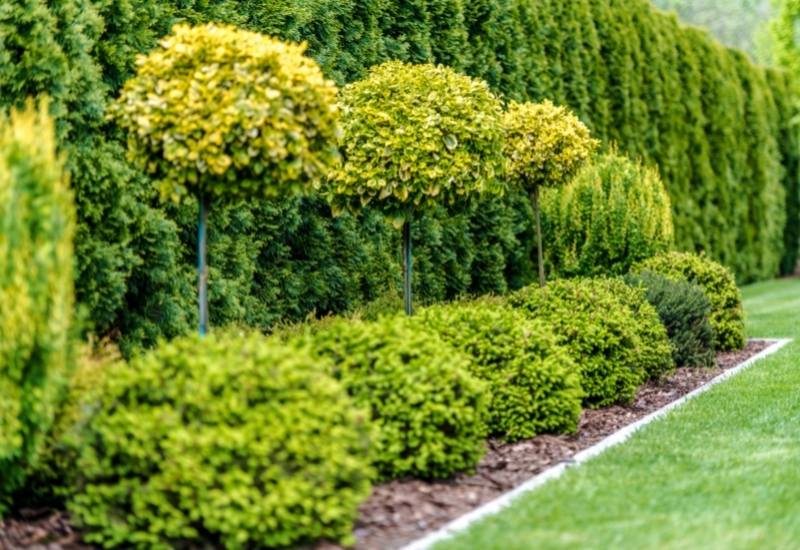
August is a really good time to transplant fruit trees, decorative trees, or shrubs. Because it is late in the year and the weather is starting to cool, they will not require as much watering as if you had planted them in the spring, but they will still have time to put down roots and get established before winter sets in. Then the plants will have a head start come spring.
One disadvantage to planting trees and shrubs in August is that there might be limited supply available at the garden centres, so make sure your pre-order if you are set on any particular varieties.
Conclusion
As summer is coming to an end, we shouldn’t think our garden is ending with it. Even in northern climates where August feels more like winter than summer, we can still squeeze in a small harvest of cold-hardy greens or maybe one more bloom for the year. If you are lucky to garden in a temperate climate, August can present you with limitless possibilities.
Whether it is part of your succession planting or you are opening a new bed, August can be a month of new growth and the start of a bountiful harvest.

Written By
Amber Noyes
Amber Noyes was born and raised in a suburban California town, San Mateo. She holds a master’s degree in horticulture from the University of California as well as a BS in Biology from the University of San Francisco. With experience working on an organic farm, water conservation research, farmers’ markets, and plant nursery, she understands what makes plants thrive and how we can better understand the connection between microclimate and plant health. When she’s not on the land, Amber loves informing people of new ideas/things related to gardening, especially organic gardening, houseplants, and growing plants in a small space.
